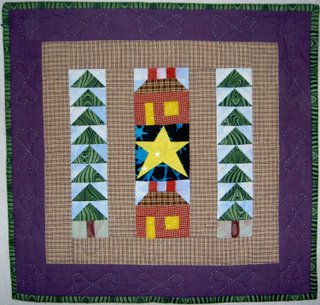
Add Interest to your Quilt with Simple Sashing
Your blocks can range from the very simple to the very complex, and they will still benefit from sashing.
Sashing is what goes between the blocks in a quilt. Like quilt blocks, sashing can be very simple or it can be as complex as your quilt blocks. And some quilts have no sashing at all.
Once you have your quilt blocks made, it's time to put them together. Yes, you could just sew them right next to each other.
A very effective, yet simple way to add some interest to your quilt is to add some simple sashing in either a solid color of fabric or a fabric with a print.
Your fabric choice may be determined by what your blocks look like and what you want the focus of the quilt to be.
If your blocks are fairly simple, you may decide to used some very interesting and exciting fabric for your sashing. If you want people to look at the blocks more than the sashing, then choose a solid fabric for the sashing.
When I made the quilt pictured above, I wanted the focus to be the hearts, not that sashing, so I chose fabric that made the hearts stand apart from each other, but did not cause too much attention to be taken away from the hearts.
For other examples, click here for the full article about adding sashing to your quilt.
Happy Quilting!
Penny Halgren
Penny is a quilter of more than 24 years who seeks to interest new quilters and provide them with the resources necessary to create beautiful quilts.
www.How-to-Quilt.com
Inspiration and Education for Beginning Quilters
www.Rag-Quilt-Instructions.com
Fast, Fun and Funky Quilts
www.Fabric-Postcards.com
Quilt Greetings Across the Miles




